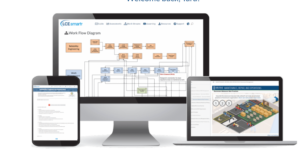Alumina-Refinery-Drives-Continuous-Improvement-with-Reliability-Excellence-322
The Situation:
A large alumina refinery site in the southwest United States was struggling with an aging plant and poor capital support for improvement of its installed equipment. The plant was highly reactive in its maintenance processes and operational practices did not support effective asset care.
The Challenges:
Facing an economic downturn, the plant knew operational efficiencies would have to improve. The plant partnered with Life Cycle Engineering (LCE) for a comprehensive assessment to better understand areas of opportunity in its manufacturing processes. It was confirmed that the facility was operating in a very reactive fashion. The plant’s leadership team knew an investment in reliability was a critical step to sustainability. The plant embarked on a reliability journey to increase production, decrease the amount of reactive work and improve safety and quality of life for employees.
The Approach:
The plant and LCE partnered and set goals to make the refinery a reliable facility that protected and managed assets according to organizational goals. A customized training program for leaders, managers, engineers and technicians was established to ensure the workforce was adequately prepared for a major reliability initiative. LCE and the site leadership team incorporated a robust change management plan to ensure the “people side” of change was addressed. The change management plan included coaching plans, a communication plan and leadership sponsorship plans for the initiative. The following focus areas were targeted to improve plant performance:
- Asset hierarchy construction and validation
- Equipment maintenance job plans
- Work management
- Materials management
The Results:
LCE trained the workforce on reliability best practices during the 12 months of on-site, hands-on implementation. Business and manufacturing processes were redefined and implemented according to best-in-class standards. After the intensive engineering and hands-on training, the refinery took the reins and led the initiative to achieve these results:
- $8.0 million reduction in maintenance spending one year after implementation
- Alignment of asset management activities with organizational goals
- Standardization of business processes based on industry best practices
- Increased output of the plant with sustained, record-setting levels
- Improved maintenance, repair, and operating practices for supplies, inventory and warehousing
- An increasing level of proactive maintenance and execution of PMs
- Dramatically improved quality of work life for their 600 employees
Conclusion:
With its ongoing reliability efforts, the plant has structured an environment of continuous improvement. The employees are happier working in an environment where there is more structure and discipline in their processes. As the plant continues down the journey of reliability, the improved quality of life keeps employees engaged and proud of their work. The plant continues to reap the financial benefits of the reliability initiative and asset management efforts.
© 2014 Life Cycle Engineering, Inc.
For More Information
843.744.7110 | info@LCE.com
















